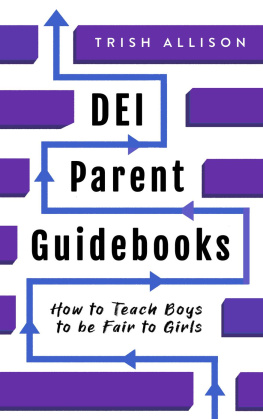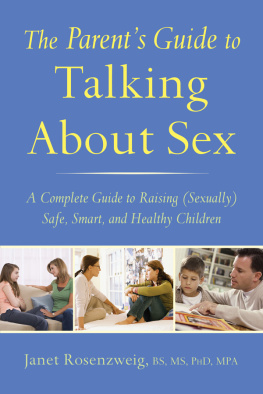How to Explain Immigration to Kids
DEI for Parents
Trish Allison
Published by DEI for Parents, 2022.
While every precaution has been taken in the preparation of this book, the publisher assumes no responsibility for errors or omissions, or for damages resulting from the use of the information contained herein.
HOW TO EXPLAIN IMMIGRATION TO KIDS
First edition. October 15, 2022.
Copyright 2022 Trish Allison.
ISBN: 978-1393931751
Written by Trish Allison.
10 9 8 7 6 5 4 3 2 1
Also by Trish Allison
DEI for Parents
How to Respond to Disability Curiosity from Kids
How to Explain Immigration to Kids
How to Explain Transgenderism to Kids Using Simple Words
How to Talk to Kids About Poverty and Homelessness
How to Teach Boys to be Fair to Girls
How to Teach Kids Manners for ANY Religion
How to Teach Girls They're Just as Worthy as Boys
How to Teach Kids to Interact with Older People
How to Teach Kids to be Kind to Gay People
How to Tell Kids the True Story of Native Americans
Watch for more at Trish Allisons site.
My fellow Americans, we are and always will be a nation of immigrants. We were strangers once, too.
- Barack Obama
I t's likely that your child has already heard about immigration in one way or another. But because kids might have spotty knowledge about the subject, it's important to fill in the gaps of information with the truth and to correct any misconceptions they might have.
The best approach? Offer simple explanations to questions like 'What is an immigrant' and 'Why do immigrants leave their home countries.' Most important, weave the following concept into all of your discussion and activities: 'America was founded on principles of fairness to people who enter our country seeking a new life.'
To make the basic principles in this guidebook as easy as possible for kids to learn, information is broken into small chunks.
"Learning by chunking increases working memory capacity by reducing memory load and facilitates acquisition or recall by organizing long-term memory for information in perceived stimuli, motor sequences, or cognitive representations."
The goal is to utilize chunks of expert-backed information to help you guide your child toward a basic understanding of the importance of respecting immigrants. The strategy used here is to teach the basics only , without overloading them with extraneous information.
Here are a few things to keep in mind as you're reading this guidebook:
- First and foremost, none of the steps are meant to be completed on a single, dictatorial occasion. The intent is to communicate the values described here on a casual basis over a period of time.
- Tips are written for parents of elementary-school children but theres a wide spectrum of maturity at every age. Some 6-year-olds are mature way beyond their years and some 10-year-olds are learning at a different pace than their peers. That said, you know your child best including what is and isnt appropriate for their maturity level. Note: All tips adhere to the child development guidelines published by the American Psychology Association.
- The chapters are organized linearly; it's best to read chapter one first and chapter five last. That said, if you have an immediate concern, feel free to read whichever chapter is most pertinent at the time.
- Many of the tips assume that you and your child already share a fairly solid foundation of mutual communication. The tips are doable without this foundation but they'll be much harder to implement successfully without it.
- The most efficient method for teaching children (and adults too) is to guide, not lecture. Help your child reach their own conclusions by providing 'breadcrumbs' of information that lead them to discover concepts using their own reasoning skills. Kids learn much more efficiently when they feel like they've arrived at a concept on their own instead of believing something because that's what they've been told to believe. Remember, this book's goal is to guide your child toward their own understanding of why immigrants deserve to be viewed with the same lens as all Americans.
- It's so important to praise kids when they do something that's aligned with whatever you taught them. Be specific with your praise and look them in the eyes when you say it. Your approval means more than you think.
Finally, while theres no one-size-fits-all solution for raising equality-minded kids, this guidebook provides suggestions for scenarios that you can tailor to fit your own situation. The ultimate goal is to help you raise compassionate, non-biased, successful humans.
Chapter 1: Learn What Your Kid(s) Already Know About Immigration
T his chapter appears first because it's important for you to find out what your child already knows about U.S. immigration before you start guiding them. If you start saying things they already know, they're likely to tune out.
Maybe they're already well-versed in all aspects of current and past issues. Or maybe they know very little about immigration and youre starting with a blank slate.
Either way, youll never know until you get them talking and really listen to their opinion.
Also, because kids tend to shy away from face-to-face, formal discussions, the best way to learn their opinion is to listen and learn sporadically. There's no need for a one-time, sit-down, eye-to-eye conversation. Keep it casual.
Step 1. Inspire your child to share their thoughts
The best way to get most children to open up is to say the minimum. If you use short phrases that reassure and prompt, you're more likely to get a response. The goal here is to get your child feeling comfortable enough to express how they feel.
The other crucial element is timing. Trying to start a conversation while your child is playing a game, reading, watching TV or a video almost never works. They'll probably find it intrusive before you even start talking. Plus, you won't have their full attention.
If it's not the right time, wait. As many parents know, timing is everything, especially when you're trying to discover a child's true feelings.
If it is a good time, here are some ideas for sparking a conversation about immigration:
A news story, series or movie where there's an immigration issue is a good place to start. The most relatable 'immigration current event' for kids usually has to do with family separation. There's no need to trigger tears here thoughstories about caged kids has been pretty grim and scary the last few years.


















